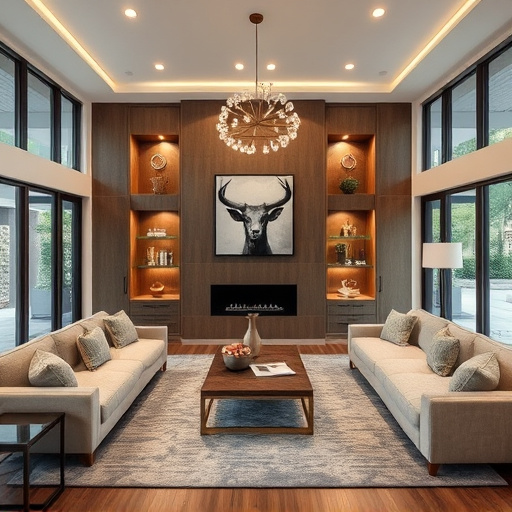Wall Art Transforms Home Interiors: Visual Impact Strategies
Wall art is a powerful and versatile tool for transforming home interiors, instantly capturing atten…….
Welcome to an extensive journey into the world of home interiors, a dynamic field that transforms living spaces into functional and aesthetically pleasing environments. This article aims to delve deep into the various facets of home interiors, exploring its global impact, economic significance, technological innovations, regulatory frameworks, and future potential. By the end, readers will gain valuable insights into this ever-evolving industry, offering a comprehensive understanding of how it shapes our daily lives and defines our homes.
Definition:
Home interiors refer to the design and arrangement of internal spaces within residential buildings, focusing on aesthetics, functionality, and personal expression. It involves the strategic placement of furniture, fixtures, lighting, and decorative elements to create inviting and comfortable living areas.
Core Components:
Historical Context:
The concept of home interiors has evolved significantly over centuries, influenced by cultural, social, and technological changes. From ancient times when homes were primarily functional spaces, to the Renaissance period that introduced grand architectural designs, and up to the modern era with its emphasis on open-concept living and smart home technology, home interiors have always been a reflection of the time and place.
Home interiors are a truly global phenomenon, yet each region adds its unique flavor and cultural influences. Let’s explore some key trends and international influences:
| Region | Trends/Influences | Cultural Significance |
|---|---|---|
| North America | Minimalist design, smart home technology, open-concept layouts | Emphasis on practicality, comfort, and the latest technological innovations |
| Western Europe | Scandi-chic aesthetic, sustainable materials, cozy yet stylish spaces | Appreciation for simplicity, functionality, and environmental consciousness |
| Asia Pacific | Fusion of traditional and modern elements, bold colors, intricate patterns | Rich cultural heritage and a blend of ancient and contemporary design philosophies |
| Middle East | Opulent decor, luxurious materials, intricate architectural details | Reflection of wealth and cultural pride, with an emphasis on grandness and opulence |
| Latin America | Vibrant colors, playful textures, indoor-outdoor flow | Celebration of local craftsmanship and a love for social spaces that bring families and friends together |
These regional variations not only showcase the diversity of home interiors but also highlight how design choices can be shaped by climate, culture, and economic factors.
The global home interiors market is a significant contributor to the economy, with various sectors playing crucial roles:
Investment Patterns:
Home interiors also attract significant investments, with real estate developers often allocating substantial budgets for interior design to enhance the appeal of their properties. Private equity firms and venture capitalists have shown interest in interior design startups, recognizing their potential to disrupt traditional retail models and offer personalized experiences.
Technology is revolutionizing home interiors in remarkable ways:
The home interiors industry is subject to various policies and regulations that ensure safety, quality, and ethical practices:
Despite its growth and potential, the home interiors industry faces several challenges:
Strategic Solutions:
Case 1: The Modern Loft Renovation (New York City)
A team of designers transformed a dated loft into a sleek and functional urban oasis. By opening up the space, adding large windows, and incorporating smart home technology, they created a bright and connected interior that catered to the client’s modern lifestyle. This project showcased the power of minimalism, open-concept design, and the integration of technology.
Case 2: Sustainable Tropical Villa (Bali)
A luxury villa in Bali was designed with sustainability at its core. Using locally sourced materials, natural ventilation, and rainwater harvesting systems, the interior designers created a harmonious blend of modern aesthetics and traditional Balinese elements. This case study demonstrated how home interiors can embrace local culture and minimize environmental impact simultaneously.
Case 3: Adaptive Reuse of Industrial Space (Berlin)
An old warehouse in Berlin was converted into a vibrant co-living space, featuring shared common areas and individually designed bedrooms. The project successfully blended industrial aesthetics with cozy, personalized spaces, attracting a community of young professionals seeking unique living experiences.
The home interiors industry is poised for exciting growth and transformation:
Home interiors are a dynamic and ever-evolving aspect of our lives, shaping the way we live, work, and socialize within our homes. From historical influences to global trends, technological advancements to regulatory frameworks, this article has explored the multifaceted nature of home interiors. By understanding its significance and addressing the challenges, the industry can continue to foster creativity, innovation, and accessibility in interior design, making homes more inviting, functional, and reflective of individual personalities.
Q: How do I create a cohesive interior design for my home?
A: Achieve cohesion by maintaining a consistent color palette, using similar furniture styles, and incorporating recurring decorative elements throughout your space.
Q: What are some cost-effective ways to update my home interiors?
A: Consider repainting walls, restaging existing furniture in new arrangements, adding throw pillows or textiles, and incorporating DIY decor projects to refresh your space affordably.
Q: How can technology enhance my home’s interior design?
A: Smart home technology allows for automated lighting, temperature control, security systems, and connected devices, offering convenience, energy efficiency, and enhanced lifestyle experiences.
Q: What are the latest trends in sustainable home interiors?
A: Current trends include the use of recycled materials, natural fibers, energy-efficient appliances, and water-saving fixtures, along with practices like waste reduction, upcycling, and local sourcing.
Q: Can you suggest ways to make my small space feel more inviting?
A: Utilize light-colored walls, reflect light with mirrors, add vertical storage solutions, and create cozy nooks with comfortable seating to maximize space and invite a sense of warmth.

Wall art is a powerful and versatile tool for transforming home interiors, instantly capturing atten…….